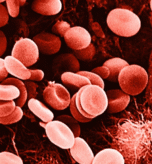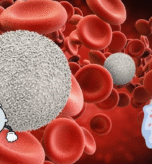The relationship between beauty and art has been a subject of fascination and debate for centuries. From ancient philosophers to modern art critics, the connection between these two concepts has been explored, analyzed, and often, redefined. In this article, we will delve into the intricate bond between beauty and art, examining the ways in which they intersect, influence, and inform one another.
Defining Beauty and Art
Before we can explore the connection between beauty and art, it is essential to understand what we mean by these terms. Beauty, in its broadest sense, refers to the quality or combination of qualities that gives pleasure to the senses or lifts the spirit. Art, on the other hand, encompasses a wide range of creative expressions, including painting, sculpture, music, literature, and more.
The Interplay Between Beauty and Art
Beauty and art are intertwined in complex ways. Art often seeks to capture, convey, or evoke beauty, whether through the representation of natural forms, the expression of emotions, or the creation of new, imaginative worlds. In turn, beauty can be seen as a fundamental aspect of art, providing a source of inspiration, a criterion for evaluation, and a means of engaging the viewer or audience.
Theories of Beauty in Art
Throughout history, various theories have emerged to explain the connection between beauty and art. Some of the most influential include:
- Imitation Theory: This theory posits that art imitates life and that beauty is a reflection of the natural world. According to this view, art strives to capture the beauty of reality, often through representation or realism.
- Expression Theory: This theory suggests that art is a means of expressing the artist’s emotions, thoughts, and experiences. Beauty, in this context, is seen as a byproduct of the creative process, emerging from the artist’s inner world.
- Formalism: Formalist theories emphasize the importance of form, structure, and composition in art. According to this view, beauty arises from the arrangement of artistic elements, such as line, color, and shape.
The Role of Beauty in Artistic Experience
Beauty plays a significant role in the artistic experience, influencing how we perceive, interpret, and respond to art. When we encounter a beautiful work of art, we may experience a range of emotions, from pleasure and delight to contemplation and reflection. Beauty can:
- Engage the Senses: Beauty can captivate our senses, drawing us into the artwork and inviting us to explore its various elements.
- Evoke Emotions: Beauty can elicit strong emotions, from joy and wonder to sadness and melancholy.
- Foster Contemplation: Beauty can inspire contemplation, encouraging us to reflect on the artwork, its meaning, and its significance.
Challenging Traditional Notions of Beauty
In recent years, traditional notions of beauty have been challenged by various art movements and styles. Some artists have sought to:
- Subvert Expectations: By creating works that are intentionally ugly, shocking, or provocative, artists can challenge our expectations and force us to reevaluate our understanding of beauty.
- Explore New Forms: Artists may experiment with new materials, techniques, and forms, expanding our definition of beauty and pushing the boundaries of what is considered “artistic.”
- Question Cultural Norms: Art can challenge cultural norms and stereotypes, highlighting the complex and often subjective nature of beauty.
Conclusion
The connection between beauty and art is complex, multifaceted, and ever-evolving. As we continue to explore and redefine the boundaries of art, we must also consider the role of beauty in shaping our experiences, perceptions, and understanding of creative expression. By embracing the intricate bond between beauty and art, we can gain a deeper appreciation for the power of art to inspire, provoke, and transform us.
References
- Plato. (c. 380 BCE). The Republic.
- Kant, I. (1790). Critique of Judgment.
- Danto, A. (2013). What Art Is.
- Eco, U. (2004). History of Beauty.
This article provides an overview of the connection between beauty and art, exploring the theories, role, and challenges to traditional notions of beauty in art. By examining the interplay between these two concepts, we can gain a deeper understanding of the complex and multifaceted nature of artistic expression



